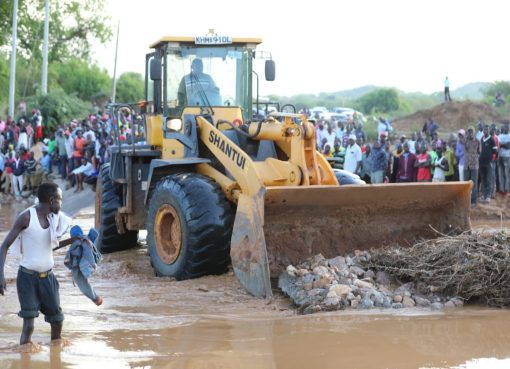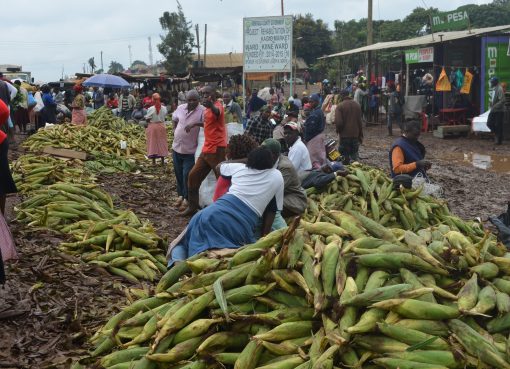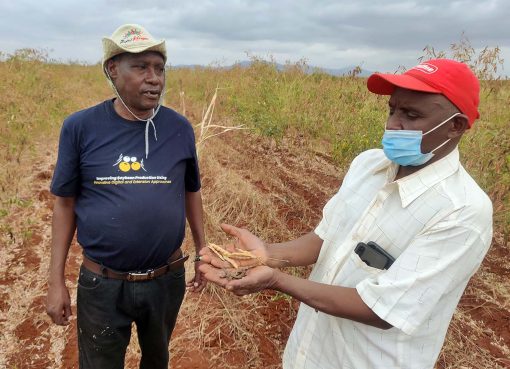It is getting more difficult for farmers to adapt to climate change, and we need better-performing, more resilient agricultural technologies, African Development Bank Group President Dr. Akinwumi Adesina has said.
Dr. Adesina, who was speaking on the sidelines of the AFDB conference on leveraging the Consortium of International Agricultural Research Centre’s (CGIAR) technologies for Agricultural Transformation in Africa, noted that the capacity to adapt to climate change means that we have to continue to fund R&D.

“There is no part of the world that has been able to achieve significant productivity growth and also transform agriculture without using CGIAR planting materials (Germplasm) technologies, which is very important,” he said.
Dr. Adesina emphasized on the need to take the technologies that we have to the farmers. “What use are technologies that sit on the shelf? We need to do top-notch research and translate the R&D into real technologies that are adaptive, accessible, and highly productive to allow smallholder farmers to raise their productivity.”
Countries, he noted, have to make sure that the CGIAR works very closely with national and regional agricultural research centers and also works very closely with the private sector to deliver results at scale.
Dr. Adesina applauded the CGIAR work on the technologies for African agricultural transformation, saying that the phenomenal work is an architecture that builds together the R&D system globally, nationally, and in the private sector and puts the best-performing technology in the hands of farmers.
He mentioned the technologies in maize, wheat growing in heat-tolerant varieties, and rice varieties that are being grown in low-land areas that have triple productivity, and this shows that Africa has the technology to feed itself.
Dr. Adesina, however, said that with all the technology, political will is a must. “Everything we do, we cannot succeed unless you have political support. The Green Revolution in Asia happened because of political support. Our issue is political support and platform policy support to scale it, and that is exactly the same thing they did in Asia,” he added.
He noted that Africa today has the Food and Agricultural Delivery Compact in 43 countries, where the work of CGIAR is ongoing with national and regional R&D systems that can feed into these particular platforms where there is policy support.
When it comes to agricultural feeding, Dr. Adesina said Africa should never be begging for food. Considering 65 per cent of the uncultivated arable land in the world is in Africa, “What Africa does with that agricultural budget is going to be the future of food in the world,” he emphasized.
Going forward, the President said there will be a need to have a structural transformation of the labor composition of the agricultural sector because a lot of the farmers that we are supporting today with all these technologies have to change.
“People are using drones. They are using automation; they are using all manner of big data analytics to look into weather patterns, predict them, and get them to the hands of farmers,” Dr. Adesina said.
Dr. Adesina said that at the African Development Bank, they have a programme called “Enable Youth in Agriculture,” where they have already put in USD 490 million to support over 43,000 young people in agriculture, creating more than 63,000 jobs.
Chair CGIAR Dr. Lindiwe Sibanda said the programme cannot scale up without partners who know how to take the technologies from the shelf to the people who need them the most, and that is farmers.
She noted that CGIAR had neglected the grandmother, orphan, and women crops but now has embraced the Vision for Adapted Crops and Soils (VACS) programme that will be implemented mainly in Africa, looking at what we now call opportunity crops.
“Most of those grandmother crops are what hold the answer for nutrition density and climate resilience. We are not afraid of the challenge of feeding 2.5 billion people by 2050 because we have the tools,” she said.
Dr. Sibanda explained that what Africa needs to do is make sure we deliver them in a climate-smart manner, but also go back to the gene banks to make sure what we thought had no commercial value now delivers food that makes sure we are nutritionally fed, but more importantly, we eradicate hunger.
During the meeting, Technology for African Agricultural Transformation (TAAT), a programme that increased agricultural productivity in Africa by deploying proven high-performance agricultural technologies currently in over 45 countries, including Kenya, was praised for raising food productivity in Africa.
Agriculture remains a cornerstone of Africa’s economy, providing livelihoods for most of the population and serving as a critical sector for economic growth and food security.
By Wangari Ndirangu





